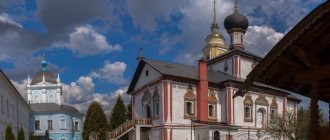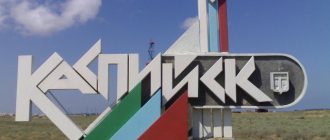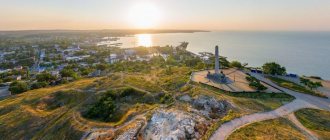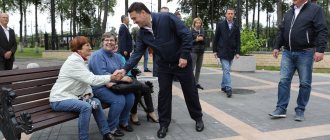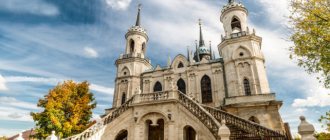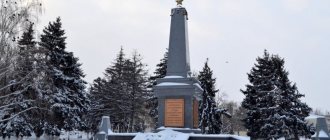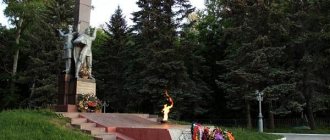City in Moscow region, Russia
For other uses, see Kolomna (disambiguation).
City in Moscow region, Russia
| Kolomna Kolomna | |
| city[1] | |
| Historical center of Kolomna | |
| Flag Coat of arms | |
| Kolomna | |
| Kolomna Kolomna Show map of Russia Kolomna Kolomna (Moscow region) Show map of the Moscow region | |
| Coordinates: 55°05′N 38°47'E / 55.083°N Latitude 38.783°E / 55.083; 38.783Coordinates: 55°05′N 38°47'E / 55.083°N Latitude 38.783°E / 55.083; 38.783 | |
| A country | Russia |
| Federal subject | Moscow region[1] |
| Based | 1177 |
| Government | |
| • Body | Council of Deputies |
| • Head | Valery Shuvalov |
| Square [2] | |
| • Total | 67.12 km2 (25.92 sq mi) |
| Height | 185 m (607 ft) |
| Population (2010 Census)[3] | |
| • Total | 144,589 |
| • Estimate (2018)[4] | 142,691 (-1.3%) |
| • Rank | 119th in 2010 |
| • Density | 2,200/km2 (5,600/sq mi) |
| Administrative status | |
| • Subordinate | Kolomna City of regional subordination[1] |
| • Capital from | Kolomna district[1], Kolomna city of regional subordination[1] |
| Municipal status | |
| • Urban district | Kolomna city district[2] |
| • Capital from | Kolomna urban district[5], Kolomna municipal district[2] |
| Timezone | UTC + 3 (MSK [6]) |
| Postal code(s)[7] | 140400 |
| Dial code(s) | +7 496 |
| OKTMO I WOULD | 46738000001 |
| Web site | www.kolomnagrad.RU |
Kolomna
(Russian: Kolomna, IPA: [kɐˈlomnə]) is an ancient city of Moscow Oblast, Russia, located at the confluence of the Moscow and Oka Rivers, 114 km (71 mi) (by rail) southeast of Moscow. Population: 144,589 (2010 Census);[3]150,129 (2002 Census);[8]161,881 (1989 Census).[9]
Story
Mentioned for the first time in 1177, Kolomna.[10] was founded between 1140 and 1160 according to recent archaeological research.[11] The name Kolomna may come from an Old Russian term for "at a bend (in the river)", especially since the old town is located at a sharp turn into the Moskva River. In 1301, Kolomna became the first city to become part of the Moscow Principality.[12]
Like some other ancient Russian cities, it has a Kremlin, which is a citadel, similarly more famous in Moscow, and is also built of red brick.[13] The stone Kolomna Kremlin was built in 1525–1531 under the Russian Tsar. Vasily III. Kolomna Citadel was part of the Great Abatis Boundary[14] and although most of the surrounding wall was removed in the eighteenth century and the materials were used for the construction of other public buildings, the remaining section of the wall, several towers and some internal buildings have been preserved and maintained in good condition . There is a museum inside. In front of the façade stands a statue of Dmitry Donskoy, commemorating the gathering of his troops in Kolomna on the eve of the Battle of Kulikovo in 1380.
The civilian arms of Kolomna were provided by Empress Catherine II, who was influenced by the sonorous name of the famous Colonna family of Rome. Hence the similar appearance of the coat of arms, despite the lack of connection between the Roman family and the city of Kolomna.
Due to the sensitive military production of missile components, Kolomna was a closed city until 1994. It is not included in the list of Golden Ring cities, despite its Kremlin and a large number of well-preserved churches and monasteries.
Routes on the map of Kolomna. Transport infrastructure
Kolomna has an advantageous geographical location due to the intersection of important land and water transport routes.
The Moscow-Samara highway passes through the city, as well as the M5 Ural along the route Moscow - Ryazan - Penza - Samara - Ufa - Chelyabinsk.
The Golutvin railway station is located on the route of the Moscow-Ryazan Railway; electric trains depart from it in the directions Golutvin - Moscow, Golutvin - Ryazan, Golutvin - Ozyory, Moscow - Ryazan, Moscow - Lukhovitsy. Station address: st. Vokzalnaya, 3A.
Kolomna bus station is located opposite the railway station on Vosstaniya Square, 7. Intercity and suburban buses depart from it to Moscow, Ryazan, Yegoryevsk, Raduzhny, Bronnitsy, Lukhovitsy, Zaraysk and other settlements.
Through the river port, excursion trips along the Oka River are carried out, as well as cargo transportation to Ozera, Lukhovitsy, Zaraysk and Voskresensk.
The city does not have its own airport; on a satellite map of Kolomna, the nearest airport, Domodedovo, is located 94 km from the city.
The city's public transport is represented by 10 tram and 14 bus routes. Also, minibuses run in 9 directions around Kolomna. The fare for them is 46 rubles. The condition of public transport is satisfactory due to its wear and tear.
Demography
| This section do not quote any sources . |
Historical population of Kolomna (in thousands)
| Year | 1897 | 1926 | 1939 | 1959 | 1962 | 1967 | 1970 | 1973 | 1976 | 1979 |
| Population | 20.9 | 35 | 85 | 118 | 125 | 131 | 136 | 140 | 145 | 146.5 |
| Year | 1982 | 1986 | 1989 | 1992 | 1996 | 1998 | 2000 | 2001 | 2003 | 2006 |
| Population | 151 | 158 | 162 | 163.7 | 153.6 | 152.1 | 150.7 | 149.6 | 150.1 | 148.0 |
Coat of arms
The coat of arms of Kolomna is presented in the form of a French shield. In an azure field there is a silver column on a green hill. The figure is a symbol of greatness, strength, and reliable support. The firmament is thinly bordered with gold. The structure is topped with a crown flanked by two yellow six-pointed stars. Two of their rays are facing upward. Precious metal embodies wealth, justice, and generosity.
The artistic composition was adopted by decision of the City Council of Deputies dated May 22, 2002 No. 20/7 (as amended on June 18, 2003 No. 23/5).
Famous people
- Filaret, Metropolitan of Moscow
- Ivan Lazhechnikov, writer
- Dmitry Dorofeev, speed skater
- Nikolai Epstein (born 1918), Soviet ice hockey coach.
- Sergei Gorshkov, Soviet admiral
- Mikhail Katukov, commander of armored forces in the Red Army
- Ekaterina Lobysheva, speed skater
- Eduard Malofeev, football player and manager
- Mikhail Tyurin, cosmonaut
- Edward Frenkel, mathematician
- Olga Graf, speed skater
- Sergey Malitsky, science fiction writer
- Vitalik Buterin, programmer, writer and creator of Ethereum
Main streets of Kolomna
- Etc. Kirova is a wide highway in the central part of Kolomna, separating it from the Repinsky district. There is a Memorial Park, a monument to V.P. Makeev, supermarket “Pyaterochka. On both sides of the avenue there are only multi-storey buildings.
- St. October Revolution is the most important and longest street in the city, starting from the bridge over the Oka River to the left bank of Kolomna and ending in the village of Raduzhny. Its name in the address includes Vosstaniya Square, the railway station, Bobrovsky Park, the district administration, the Kolomna Court and the Ion-Theological Church.
- St. Lenina is another street in the center of Kolomna, on which the Trud stadium, the Teplovozostroitel sanatorium and Peace Park are located.
- St. Astakhova is a street in the Kolychevo district, starting from Kirov Avenue and ending almost at the exit from the city. On it there is a monument to the 800th anniversary of Kolomna, a Magnit supermarket and clinic No. 2.
- Ave. Machine Tool Builders is a short but wide artery of the city, near which there are mainly industrial enterprises and stores “Pyaterochka”, “Continent”, as well as rehabilitation class=”aligncenter” width=”1860″ height=”855″[/img]
Attractions
Kolomna Kremlin Old Golutvin Monastery
- Kolomna Kremlin including: Kolomna Cathedral
- Novo-Golutvin Monastery
- Bobrenev Monastery
KOLOMNA
KOLOMNA, a city in Russia, in the southeastern part of the Moscow region, the center of the Kolomna urban district. Population 140.1 thousand people. (2019). Located at the confluence of the Kolomenka, Moskva and Oka rivers (river port on the Oka River). Within the city there are 5 railway stations, including Kolomna, Golutvin, Shchurovo (freight service). The Ural federal highway passes through K. (Moscow - Samara - Chelyabinsk).
Story
The wall of the Kolomna Kremlin was spun between the Kolomenskaya (Marinkina) and Faceted towers. Photo by A.V. Andreev.
The city arose on the site of a Slavic settlement of the 10th–11th centuries. (finds of molded and early circular ceramics). It was first mentioned in the Laurentian Chronicle in 1177. K. was a border point of the Ryazan principality and was of great strategic importance, since it controlled traffic along the Oka and Moscow rivers. K. was repeatedly mentioned in chronicles in connection with the wars. book Vladimir Vsevolod Yuryevich the Big Nest against the Ryazan principality (1180, 1185–86, 1207). In 1183, a ship’s army gathered near K. for Vsevolod’s Big Nest campaign against Volga-Kama Bulgaria. In the 2nd half of the 12th – 13th centuries. center of the appanage principality; the first known prince of K. - Vsevolod Glebovich (1185–86). The Vladimir princes attempted to secede K. from the Ryazan principality, but to no avail. During the Mongol-Tatar invasion in January 1238, a major battle took place near the city walls between the united Russian squads and the Mongol-Tatar troops of Batu, which ended in the defeat of the Russian forces and the capture and burning of Kazan. In 1293, Kazan was devastated by the Mongol army under the command of Duden (Tudan).
Kolomna. Ensemble of the Epiphany Staro-Golutvin Monastery. 17th–19th centuries Photo by P. S. Pavlinov.
Kolomna. The central part of the city. Photo by A.I. Nagaev.
In 1300–1301, Moscow Prince Daniil Alexandrovich annexed K. to the Moscow Principality. Since 1340, K. was the main domain possession of the Moscow princes (it was part of the inheritance of the eldest son - the heir). In the 14th century The urban area expanded, the city's layout took shape, and new fortifications and stone churches were built. At the end of 1352 - beginning of 1353, the Kolomna diocese was established (abolished in 1799). 15.8.1380 near K., on the Devichye Pole, led. book Vladimir Dmitry Ivanovich organized a review of all-Russian forces heading to the Don to fight with the troops of Mamai (see in the article. Battle of Kulikovo 1380). Devastated during the Tokhtamysh raid of 1382, the Edigei raid of 1408 and the attack of Ulug-Muhammad (1439). In 1433–34, during the Moscow strife of 1425–53, K. was the inheritance of Vasily II Vasilyevich, who was removed from the grand-ducal throne. In the middle - 2nd half of the 15th century. K. became one of the main points of “coast service” on the Oka line of defense (large forces of the Grand Duchy of Moscow gathered here in 1450, 1451, 1454, 1455, 1461, 1472). In K. on the eve of the Standing on the Ugra in 1480 there were troops led. book Moscow Ivan III Vasilyevich, collected to repel the invasion of Khan Ahmed. During the campaign against Moscow of the Crimean Khan Muhammad-Girey I (1521), the Tatars broke through the defenses along the Oka River and devastated K. and its surroundings. By order of the leader. book Vasily III Ivanovich of Moscow built a brick Kremlin in 1525–31. K. is one of the main gathering places for Russian forces during the organization of the Kazan campaigns. In the 3rd quarter of the 16th century. As a result of epidemics, raids by the Crimean khans and the oprichnina, the city fell into decay.
Kolomna. Church of the Conception of John the Baptist on Gorodishche. 2nd half 14th century, rebuilt in the 16th century. Photo by V. M. Pappe.
During the Time of Troubles, Kazan was taken by the army of P. P. Lyapunov (October 1606); In the summer of 1608, supporters of False Dmitry II tried to occupy the city twice, but were defeated by the prince. D. M. Pozharsky; in 1609 K. was again besieged twice by supporters of False Dmitry II. In 1611–12, M. Mniszek and her son Ivan Vorenok were in K. In the beginning. 1612 Kolomna residents were among the first to respond to the calls of the organizers of the Second Militia of 1611–12 and sent an armed detachment and money to Nizhny Novgorod. In the 17th century K. lost its strategic defensive significance and became an internal city of the Russian state and was part of the Zamoskovny region. The city became a significant trade and craft center and a transshipment point for trade, mainly in grain and cattle.
In 1708–1929 K. was a district town in the Moscow province. In the 2nd half of the 18th century. The first manufactories arose; among the Kolomna merchants, the Meshchaninov family occupied a special place. Trade, which received a new impetus after the construction of the Ryazan highway (1847), began to decline after the opening of traffic along the Moscow-Ryazan railway. d. (1862). In 1863, the brothers A. E. and G. E. Struve founded the Kolomensky Machine-Building Plant on the basis of repair shops - one of the largest in Russia (now the Kolomensky Plant), which produced steam locomotives. In 1926, the villages of Gorodishche, Bochmanovo, and Podlipki were included in Kolomna. In 1929–30 the district center. Since 1939 it has been a city of regional subordination of the Moscow region. With the beginning of the Great Patriotic War, the Kolomna Machine-Building Plant organized the production of mobile platforms for anti-aircraft guns, guide planes for rocket launchers, and then the BM-13 (Katyusha) launchers themselves; 2 armored trains were built, heavy KV tanks were repaired. In 1960, the city of Shchurovo on the right bank of the river became part of Kazan. Oka. District center (1929–2017) of the Moscow region. Historical city of Russia (since 1990). From 2022 the center of the Kolomna urban district. City of Labor Valor (2021).
Archeology
K. is an important archaeological monument. Research has been conducted since 1903 (G. T. Sinyukhaev, A. V. Artsikhovsky, N. P. Milonov, N. N. Voronin, A. A. Molchanov); since 1989, security excavations have been continuously carried out by the Archaeological Service created by local researchers. On the territory of the Kremlin, Posad and in the Zaprudy area, a cultural layer up to 2 m thick was recorded, its main part dates back to the 2nd half of the 12th – 18th centuries. The oldest burial mound and ground cemetery (2nd half of the 12th century), a shaft built at the beginning of the 14th century, was studied. (reconstructed in the late 1320s - early 1330s, in the mid-1370s, in the late 1390s - early 1400s, the last addition in the 2nd half of the 15th century). The following were discovered in the Kremlin: a site of the final Paleolithic period from the 14th – 12th millennium BC. e.; Mesolithic, Neolithic and Bronze Age sites; permanent settlement of the Dyakovo culture on the territory of the “Blyudechko” public garden. Estates dating from the 14th to 16th centuries have been explored. (a pottery forge from the 1360s–70s was found on the territory of one of them), a tannery workshop (14th century), and the remains of trading premises (16th–17th centuries). Among the finds are scales, weights and weights (14th–17th centuries); blacksmith's forge and brick kilns (16th century); a large collection of imported items; several coin hoards from the 17th – early 18th centuries.
Architecture
The Kolomna Kremlin, close in military-engineering and artistic terms to the Moscow Kremlin, was built with the participation of Italian architects at the confluence of the river. Kolomenka in the river Moscow made of brick with white stone backing; in plan it resembled an irregular polygon approaching an oval. Along the perimeter of the walls (about 2 km; thickness was 4–5 m, height 12–20 m) there were 16 towers, including 3 travel towers. On the outside there was a deep ditch lined with white stone. The following have been preserved: the Spassky (Pyatnitsky) gate (with a chapel of the same name from the 1830s–40s), 2 sections of walls, 6 towers - round Kolomenskaya (Marinkina), 6-sided on the outside and rectangular on the inside of the Granovitaya Kremlin, rectangular Pogorelaya, Spasskaya, Semenovskaya, Yamskaya (restored in 1886–1906 under the leadership of A. M. Pavlinov). In the center of the Kremlin is the ensemble of Cathedral Square with the 4-pillar, 5-domed Assumption (1672–82, artel of Yaroslavl masters led by Melety Alekseev; built on the site of a 14th century cathedral; baroque iconostasis - around 1772) and Tikhvin (1858–61; in the Russian style) cathedrals, a hipped bell tower (1682–92, at the base there is a quadrangle church of the 16th century), the Church of the Resurrection of the Word (16th century; the top was rebuilt in 1786; the refectory - 1812). On the territory of the Kremlin there are also: the pillarless Church of St. Nicholas Gostiny (presumably 1501–09, rebuilt in 1641, 1751–52, 1848), the Church of the Exaltation of the Cross (1760–64, rebuilt in 1832–37 in Empire forms), the building of the National School in the style classicism (1790s), estates and residential buildings of the 19th – early 20th centuries. (Lukovkin’s house, 1830s).
3 monastery complexes have been preserved. On the territory of the Kremlin there are the Holy Trinity Novo-Golutvin Convent (founded in 1800 as a man’s monastery, closed in 1919, revived in 1989; in the mid-14th to 18th centuries it was an episcopal courtyard): the Fraternal (Bishopish) and Seminary buildings (both - end 17th century, with later alterations; on the 1st floor of the Brethren building there is a single-pillar chamber of the 16th century; in its northern part there is the Church of St. Sergius of Radonezh in the neo-Gothic style, late 18th century, 1823, now the Church of the Intercession), Church of the Intercession (between 1618 and 1652, rebuilt after 1777 into a civil building; now the house of the abbess), Trinity Church (1705), bell tower in the Empire style (1825), wooden over-chapel of St. Prince. Vladimir and St. Anastasia the Pattern Maker (2001–2002); Assumption Brusensky Monastery (founded in 1552 as a men's monastery; in the 1620s it was converted into a women's monastery, closed in 1922, revived in 1997): the tented Assumption Church (1552), two cell buildings (1848, 1849–50), the house of the abbess ( 1850–52), Holy Cross Cathedral (1852–55, architects A. S. Kutepov, V. E. Morgan; combining classicism with Russian style). Southern outpost of Kolomna - located at the confluence of the Moscow and Oka rivers (now within the boundaries of K.) Epiphany Staro-Golutvin Monastery (late 1385 - early 1386; closed in 1929, revived in 1994): 4-pillar Epiphany Cathedral (circa 1701; in basement - the foundation of a white stone church, late 14th century), Sergius Church (1828–33, masonry from the previous church was used), a 3-tier bell tower over the Holy Gate and the Church of the Presentation of Our Lady (late 18th - mid 19th centuries), rector's (in its based on a ward of the 17th century) and 2 fraternal buildings from the 1810s–30s. (one of them is now Kolomna Theological Seminary). All Kolomna monasteries have original fences (1750s - 1830s) with round multi-tiered towers in the neo-Gothic style (presumably based on the designs of M.F. Kazakov).
From the end of the 18th century. Construction of the city was carried out according to a regular layout (general plan 1784). On the Square of Two Revolutions there are: an empire-style ensemble of shopping arcades (built by 1865, architect I. A. Dagaev; rebuilt in the 1960s, architect M. I. Bondarev) in the shape of a square; inside it is the Church of the Apostle John the Theologian (1733–56; refectory – 1800s, architectural decoration – 1829–35, 5-tier bell tower – 1826–46), a guardhouse building (“postal entrance”, 2nd quarter of 19 V.). Among the most ancient monuments of the Moscow region is the pillarless Church of the Conception of John the Baptist on the Settlement on the left bank of the river. Kolomenka (2nd half of the 14th century, reconstruction of the quadrangle - 1st half of the 16th century, bell tower - 1780, refectory - late 19th century). Among other surviving churches: Epiphany in the former Goncharnaya Sloboda (1680–89, refectory - 1800–1804, bell tower of the 1st half of the 19th century), Church of the Great Martyr. Nikita (1695, refectory part and bell tower - 18-19 centuries), Trinity Church on Repnya (1696, bell tower - 1823-25), completed with tiers of kokoshniks and a miniature 5-domed church of St. Nicholas Posadsky (Resurrection Church on Posad, 1716), Church of Saints Boris and Gleb (1716–26, rebuilt in the late 18th – early 19th centuries), Church of the Nativity (1725; refectory – 1870, paintings – 1908), cemetery church of the Apostles Peter and Paul (1775–79; refectory – 1901 , architect D. E. Vinogradov; the stone fence and chapels of St. Nicholas and St. Sergius have been preserved - 1891, architect F. V. Rybinsky), Voznesenskaya (1792–99, presumably architect M. F. Kazakov, refectory - 1808, iconostasis - late 18th century), Intercession (1813–28), Church of the Archangel Michael (1828–33, architect F. M. Shestakov, 1st tier of the bell tower - late 18th century; since 1936 local history museum), Elias Church in the former village. Sandyri (1834), Trinity Church in Shchurov (on the right bank of the Oka) in the neo-Byzantine style (1880s - 1907; engineer I. Vitshas according to the design of M. K. Geppener; next to it is a brick border sign between the Moscow and Ryazan provinces , 1830–40s).
Among the monuments of civil architecture of K.: “House of the Voivode” (chambers of the late 17th - early 18th centuries), chambers in Vodovozny Lane (mid-18th century); estate on Artilleristov Passage (mid-18th century), the Meshchaninovs' house (1760s) in the Baroque style; the Shevlyagin estate (2nd half of the 18th century, the right wing is in the Baroque style), the Lazhechnikov estate (mid-18th century, the upper floor was built in 1794); house of merchant A. S. Ozerov (late 18th century, now a city exhibition hall), Tupitsyna’s house (1st quarter of the 19th century), city hospital (early 19th century), complex of fire department buildings (former Konstantinov estate - 1 - second third of the 19th century), Zimin’s house (1830s), Kislovskaya almshouse (1840s) in the style of classicism; the Morozov house in Shchurov (1906–14, architect M. A. Mukhin according to the design of I. V. Zholtovsky, later rebuilt); village them. V. E. Levshina (1927), building of the Central Regional Hospital (1930), Palace of Culture “Diesel Locomotive” (1934–35) in the style of constructivism. Equestrian monument to Dmitry Donskoy (2007; sculptor A. I. Rukavishnikov), a monument to the Slavic enlighteners Saints Cyril and Methodius (2007; sculptor A. A. Rozhnikov).
Centers of science and culture
All-Russian Research and Design-Technological Institute of Rolling Stock of the Ministry of Railways of the Russian Federation. State Pedagogical Institute (founded in 1920 as a teachers' seminary; institute status since 1939, modern name since 1953), branches of Moscow universities, including the State Open University (Kolomensky Institute), State University of Economics, Statistics and Informatics, Academy of Economics and rights (non-state). District Library named after. I. I. Lazhechnikova (1899). Museum of Local Lore (opened in 1934), its branch is the Museum of Military Glory. City Philharmonic (2006), consisting of: the Riturnel ensemble (1987), the Pilgrim chamber theater (1992), the Ensemble of Russian Folk Instruments, and the Brass Band. Cultural (opened in 1991 in the former cell building of the Assumption Brusensky Monastery). Christmas festival of folk music and theater "Nativity scene" (since 1999, annually).
Sport
K. is one of the centers for the development of speed skating in the country (since the 1960s); in 2008 the European Speed Skating Championships took place here (in the Speed Skating Center opened in 2006). Football club "Kolomna" (formed in 1998) is a permanent participant in the championship of the Professional Football League (Zone "West"), playing at the Avangard stadium (built in 1958; about 8 thousand seats).
Farm
Large industrial center of the region; The most developed industries are mechanical engineering (including defense production), the food industry, and the production of building materials. The most important enterprises are the Kolomna Plant (part of the Transmashholding company; passenger and cargo diesel locomotives, electric locomotives and diesel engines), Research and Production Corporation Mechanical Engineering Design Bureau (man-portable anti-aircraft, anti-tank missile systems, etc.), Stankotech (founded in 2014 on the basis of the production facilities of the former Kolomna Heavy Machine Tool Plant, since 2016 in the structure of heavy and unique equipment for heavy engineering enterprises, the aerospace industry and the military-industrial complex), Kolnag (agricultural machinery), Kanat ( twisted and braided ropes made of polyamide, polypropylene, cotton and polyester threads), "Kolomenskie paints" (facade paints), "Shchurovsky cement plant" (as part of the LafargeHolcim group of companies; cement, concrete and dry mixes), "Elgad-ZSI" ( aerated concrete blocks), "Furniture Man" (cabinet and upholstered furniture), meat and dairy plants, "Kolomchanochka" confectionery factory. Cultural and educational tourism has been developed.
Neighborhood
Near K., on the left bank of the river. Moscow, preserved northern outpost of K. - Bogoroditse-Nativity Bobrenev Monastery (founded in 1381, closed in the 1920s, revived in 1991): Cathedral of the Nativity of the Virgin (1757–63, hipped bell tower completed by 1790, remains of the cathedral - end 14th century), fence (1790–95) with the Holy Gates and neo-Gothic tops of the towers (2nd quarter of the 19th century), Fedorovskaya Church (1860), abbot's and fraternal buildings (1861). In the vicinity of K., in the village. Myachkovo, - the settlement of Myachkovo-Lukovskoye (1st–5th centuries, 12th–13th centuries) and the Assumption Church (1868), in the village. Prussians - the tented Elias Church (1550s), in the village. Lukeryino – baroque manor house of I. T. Meshchaninov (1750–60s), in the village. Cherkizovo - the estate of the Cherkasy princes (Assumption Church - 1734-49, refectory - 19th century; outbuilding - late 18th century, Zemstvo School - 1911) and St. Nicholas Church on the Starki churchyard (1759-63, reconstructed with the construction of a bell tower in the 1780s gg., presumably architect V.I. Bazhenov), in the village. Shkin - Holy Spiritual Church (1794–1800, architect R. R. Kazakov), in the village. Nepetsino – Znamenskaya Church (1806), in the village. Parfentyevo - St. Nicholas Church (1835–47), in the village. Gololobovo - Church of the Nativity in the Russian style (1890s, architect D. E. Vinogradov), in the village. Nikulskoye - Church of the Intercession in neo-Russian style (1898–1904, architect A.F. Meisner).
